I want you to start thinking differently about how you get information. As you know from my postings, that trust is highest from our peers, we trust those that are like us, or our friends above all us.
Information delivery is evolving, we’re starting to get information on the open wide web from our friends and contacts (although email has been a medium for a long time).
TrendWatch: Anatomy of MicroMemes, Network Feeds, and MacroMemes:
1) Narrow: MicroMeme
MicroMemes are highly focused and targeted, delivering the information to you that your network and friends thinks is important. A few days ago, I interviewed the founder of Friendfeed, an example of a MicroMeme.
[MicroMeme: Information with your immediate network about what they think is the most important]
[Example: “Three of your friends think this article is great”]
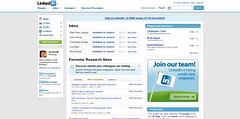
LinkedIn displays “articles your colleagues are reading” as well as other companies. Colleagues are in your direct network, tying news to your social graph.

Upcoming, displays the top events from your friends, to find local events, perhaps a great way to get timely information from your network (per Scoble’s suggestion)
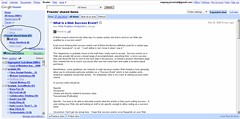
Google Reader recently added a “Friends Shared Items” which looks at gestures to determine what your contacts find is important. I credit Steve Gillmor for leading the theory on Gestures, I’d link to him, but he doesn’t prefer that.
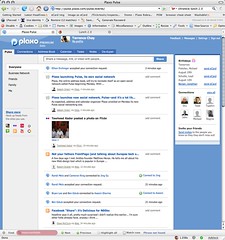
Plaxo Pulse, recently acquired by Comcast, (keep an eye on this, I am) displays information that your network cares about. Picture from Terry Chay’s Flickr photos, used with Creative Commons attribution
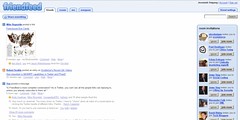
Friendfeed, which I’ve already discussed shows information based upon your friends, pulling in all of their social streams.

Facebook’s Newspage (thanks to Jamie, in the comments) points out that it indicates weight of objects from your network such as “”5 of your friends are attending xyz concert on June 15th.”
2) Moderate: Network Feeds
Common in many social networks and feedreaders, they display the most recent information from your network but do not prioritize it based on anything but time. This is problematic over time, as we need to find what’s important in a sea of noise.
[Network Feed: The most recent information from your network, but not prioritized by your friends]
[Example: Today, your friends have joined a group, added a picture and yesterday, your sister went to a baseball game]
 >
>
Feedreaders like MyYahoo or BlogLines don’t put weight on what your network thinks is important, and therefore just deliver content based upon most recent.
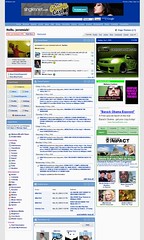
MySpace’s newspage shows alerts based on time, but does not prioritize or look for trends or memes.
3) Wide: MacroMeme
The most common form of how information was delivered for over 100 years is by industry and from an editor that you don’t know, and sometimes don’t trust. Although more advanced forms have appeared with news sites that use algorithms to find out what’s important.
[MacroMeme: Information about the things your industry thinks is important]
[Example: The top news stories today are Microsoft wanting to acquire Yahoo according to the New York Times]
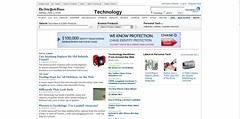
New York Times has no social sorting of your content, nor does it prioritize information based upon your networks’ preferences. It’s sorted at the industry level although it offers various “popularity”.
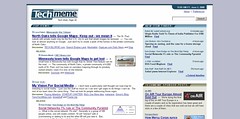
Techmeme delivers industry related information for the tech industry, but it’s not sorted by social networks, or social preferences –unless you’re one of the few top bloggers that are actively involved.
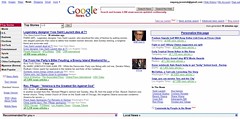
Google News also displays information based upon industry perspective, but does offer a “popular” ranking.
Summary
Each of these information delivery systems serves a different purpose, none is better than the other, but it’s important to know that MicroMeme presentation is a trend on the rise. For many, MacroMemes will continue to be the way that information is delivered on the morning breakfast table, but as the next generation of information cravers arrive, information will start to be sorted by our social preferences.
I’m struggling to see how you would define Facebook as any different to FriendFeed in the way it disseminates information from your network.
Consider the newsfeed. Right now I have the following:
“5 of your friends are attending xyz concert on June 15th.”
“3 of your friends commented on a mutual friends photo
2 of your friends were tagged in this photo
A friend suggests you add this mutual friend who has just joined Facebook
In the bottom right corner there is a people you may know box displaying 3 people I know.
4 of your friends joined the group Lower Fuel Price Petition
a friend is selling an Xbox 360 in the Marketplace
Jason Calacanis posted a news story
xyz commented on Jasons news story
Jamie, I forgot about that, you’re right, that is an example of a Micromeme, thank you, I’ll move it to the right category.
Jeremiah – you’ve created an interesting breakdown – almost academic in its granularity and effort to classify/categorize things. Helpful.
Crazy, how much stuff you can keep up with these days. Has there ever been a study on the mircomeme market. How much value are we creating for consumers generating this kind of content.
Thanks Don
Quite honestly, it’s a very hard concept to describe, glad you get it.
Mathew, no study formally, but as you can tell, I’m thinking about it.
Jeremiah:
This is really interesting. I too wonder how marketing will manage or speak to the meme.
Mary
Mary
It’s going to be pretty challenging, as a MicroMeme pushes advertising to the side.
Jeremiah, you’ve certainly got the seeds of a useful concept in this post, but I’m assuming that you’ve got some follow-up articles planned?
Mark
It makes sense, I want this to a be a referencable post. It makes sense to do a case study or to look at some data on how each of these is effective.
Jeremiah,
I am indebted to you for laying out such an informative post which helps me understand another set of Web 2.0 tools.
I just joined FriendFeed yesterday and was curious to the definitions of “micro-meme” and “macro-meme”.
My “light bulb” just illuminated!
Carlos, glad to hear. You should be thinking about how you get your info now, each method is different –and each has it’s strengths and weaknesses.
Jeremiah, the post is well laid out and the services and pictures clear and straightforward. However, and I know that you are open to other terms, I don’t think meme as a service or verb (almost) is the right word for what you are describing. A meme would be the concepts, ideas and culturally relevant items (for group, industry, world) that bubble up through these services. Perhaps they are meme machines (maybe we can get that fast talking micro machines dude to read all of that information out loud http://is.gd/pIM).
Great post Jeremiah. Question: Since trends suggest that Micromeme will gain more acceptance and importance – do you think that Friendfeed would kill Google reader? I know Google Reader has the share feature but not many people do that…
Thoughts?
Prakash
It’s too early to tell what’s going to happen. I’m sure we will do some formal surveys then analysis. Stay tuned.
Thanks Don
Quite honestly, it's a very hard concept to describe, glad you get it.
Mathew, no study formally, but as you can tell, I'm thinking about it.